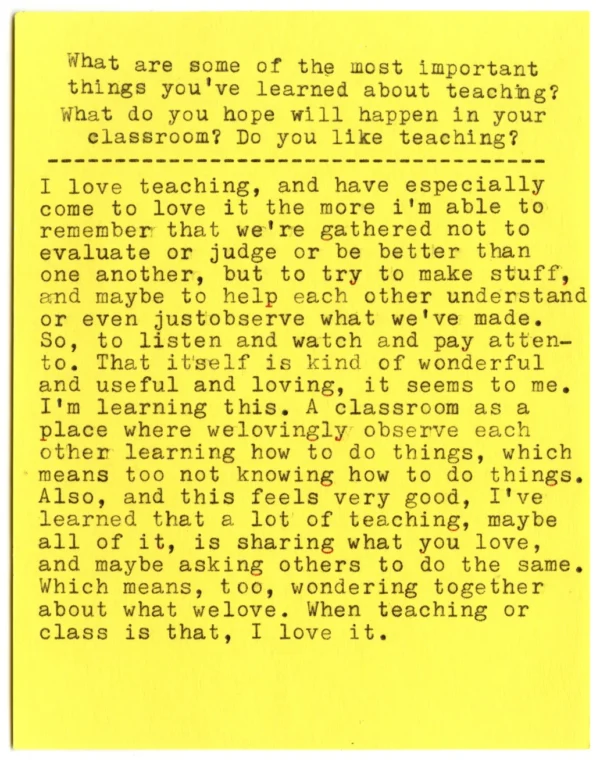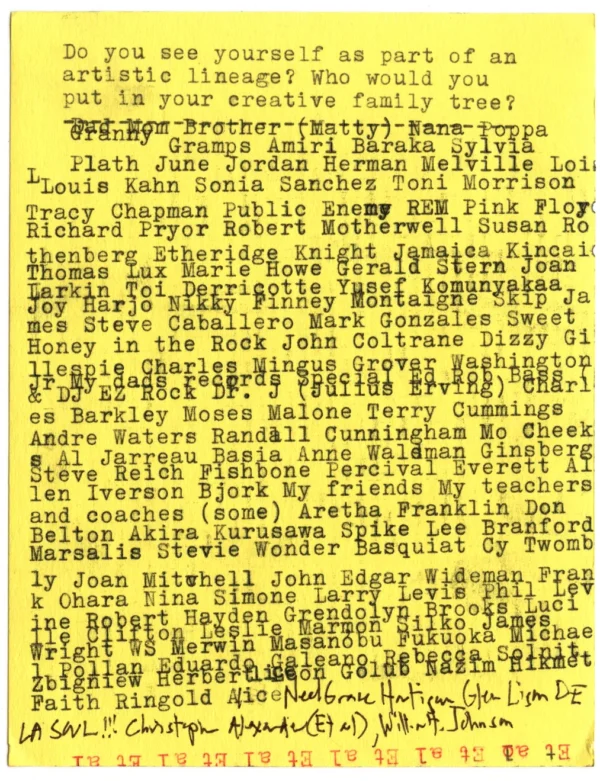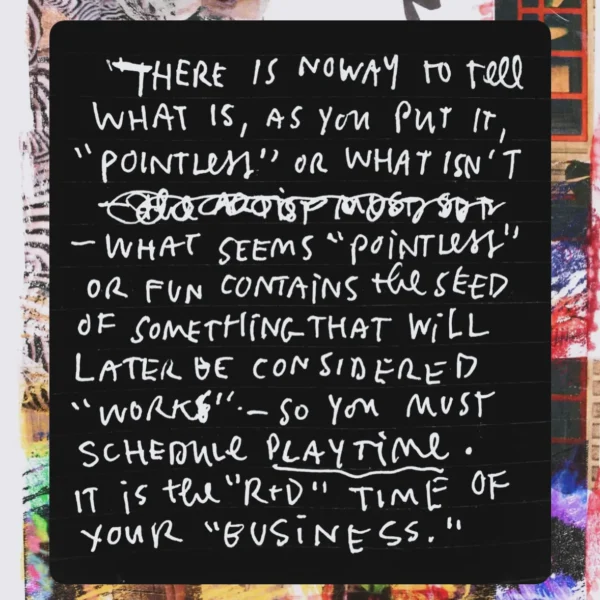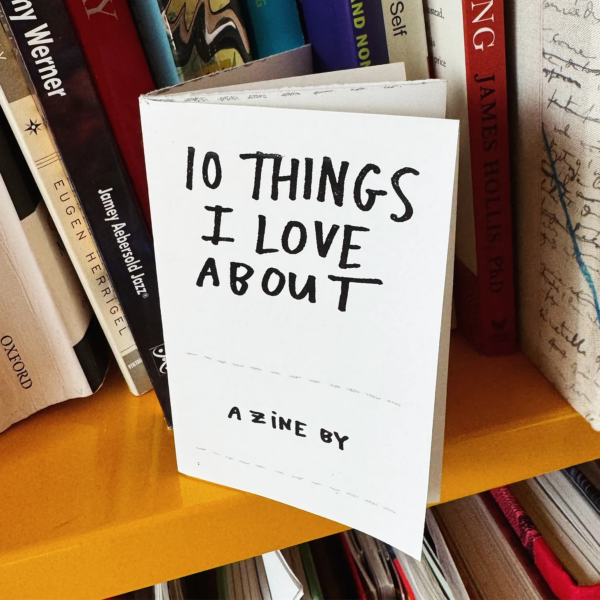
Today’s newsletter is a typewriter interview with poet, writer, and student of joy Ross Gay.

I really like doing these but they actually end up being a lot more work than just writing a normal Tuesday letter!
You can read more here.

Today’s newsletter is a typewriter interview with poet, writer, and student of joy Ross Gay.

I really like doing these but they actually end up being a lot more work than just writing a normal Tuesday letter!
You can read more here.

From today’s newsletter:
On Instagram, a reader asked me in response to my collages: “How do you balance making fun stuff with doing business? Do you allocate time to simpl[y] make ‘pointless’ things?” I scribbled the image above into my notebook in response, and then I got so worked up thinking about the topic that I scribbled this followup, which I’ve edited slightly:

Read more: Five things on my mind (and in my notebook)

Today’s newsletter comes with a free zine and other love-adjacent items: “Love is not a gadget.”

I reformatted my Read like an Artist zine as a one-pager that you can download, print, and make for yourself or your bookclub, classroom, etc.
You can download for free and watch a video about how to make it in the latest Friday newsletter.
Last Friday I wrote a newsletter called “In The Soup”:
It’s still soup season. Last month I tweeted, “Soup has a few lessons to teach us. One is: Sometimes things get better tomorrow.” A few days ago The Soup Peddler here in Austin, Texas posted an elegant edit: “Soup teaches us some things get better tomorrow.” (Note: some things, not all things.)
I got to wondering what the other lessons of soup would be, so I made a zine called Soup Lessons:
I’ve been thinking a lot about this back-and-forth chain-smoking process, how you throw out one thing, see how people react, throw out another thing based on that, and just keep doing this until you get somewhere interesting.
It’s really obvious, but: The way you keep this process going is you… do stuff. You do one thing, and one thing leads to another.
This site participates in the Amazon Affiliates program, the proceeds of which keep it free for anyone to read.